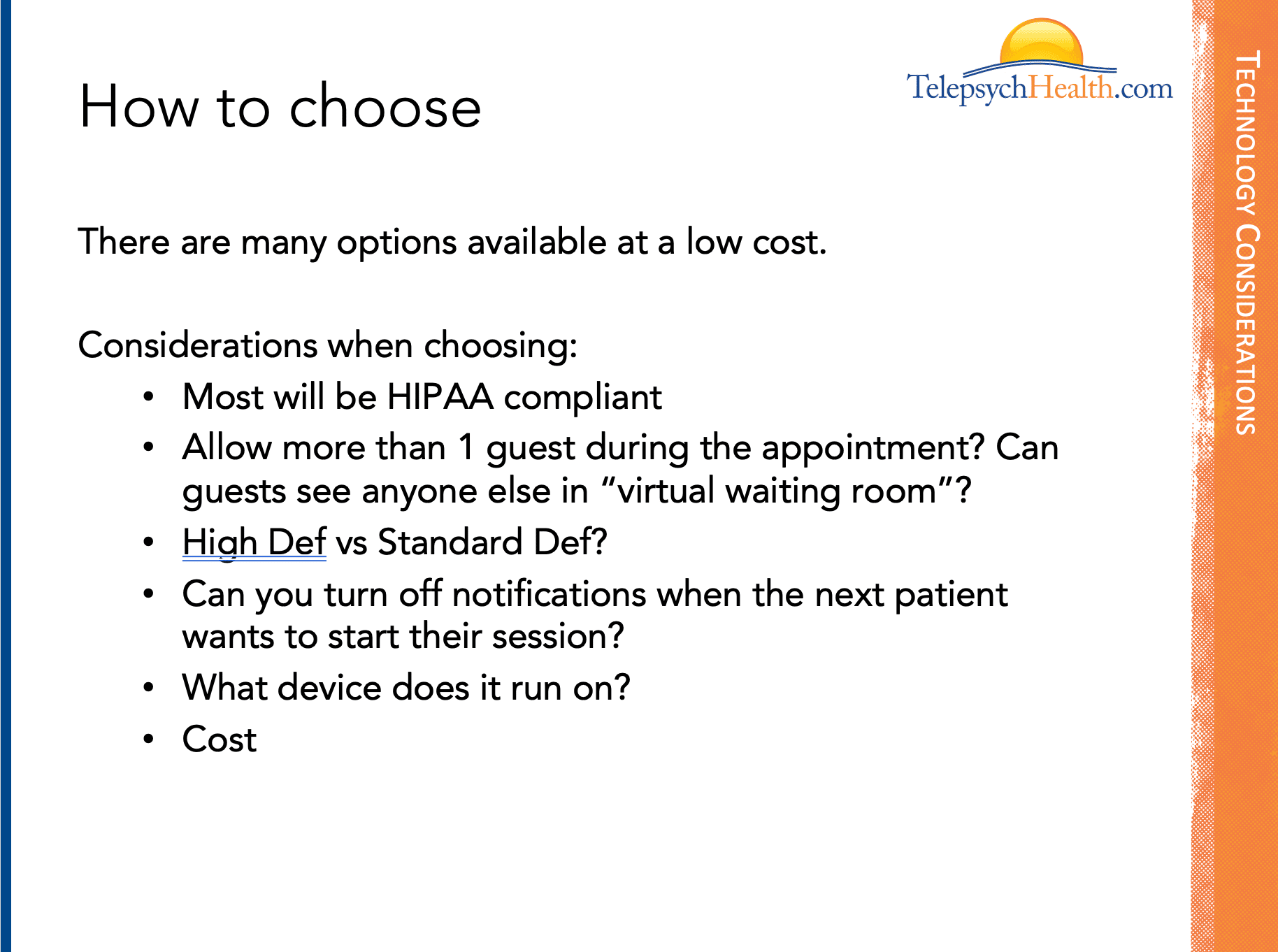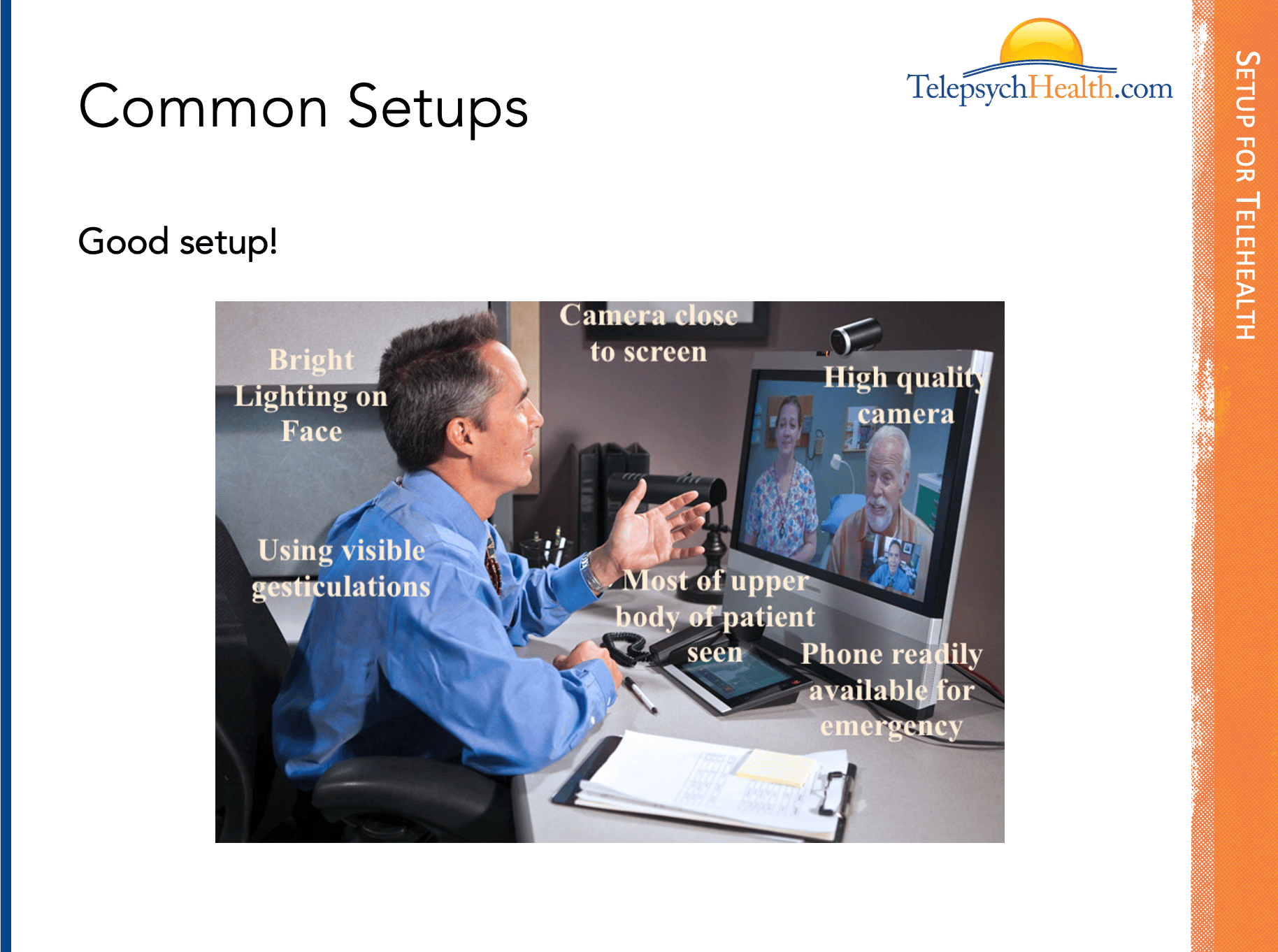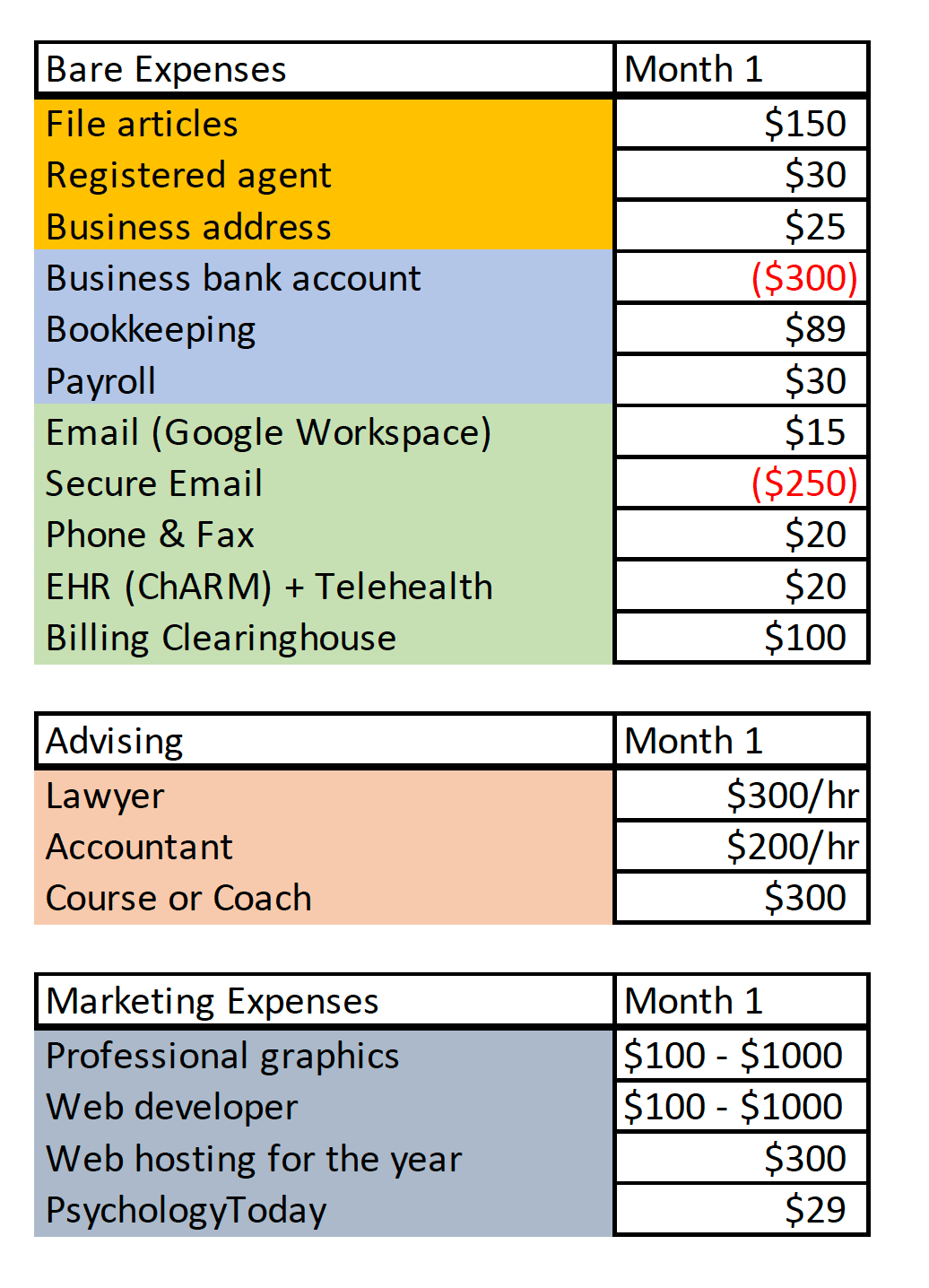Private practice owner, Dr. Bruce Bassi, gives a comprehensive ultimate guide to helping mental health professionals start a private practice. Learn how your private counseling practice can get started and market yourself for growth.
Starting a Private Practice: A Comprehensive Guide
Starting a private practice can be a life-changing decision for private counseling practice therapists. The opportunity to be your own boss, create your ideal counseling practices, and attract your ideal clients is exciting.
However, starting a private practice also involves several important considerations and steps to take before, during, and after the launch. Learn as much as possible from blogs, youtube, and a mentor/coach.
In this guide, we will explore the various aspects of starting a private practice to help you navigate the process successfully.
After running through the comprehensive guide, be sure to review our ultimate CHECKLISTS for starting a private practice, below.
Planning Your Private Practice in Psychiatry, Therapy
To start a successful private practice, your plan must include market research, a business plan, setting goals, and budgeting. There are so many elements to this process, you might be wondering how long does it take to build a full caseload?
Conducting market research can help you identify your ideal client, market trends, and competition, which is essential for creating a business that will attract your target audience.
Creating a business plan that outlines your services, pricing, and marketing plan can help you stay focused and on track. Setting clear and achievable goals for your private practice and creating a budget that considers startup and ongoing expenses are also crucial steps. In this section, we will explore each of these steps in more detail to help you create a solid plan for your private practice.
A. Market Research
This step is often overlooked because of other factors that may necessitate you live in a particular location. But with the option of running a virtual practice in other states, you can conduct market research to identify your ideal client, market trends, and competition. This includes understanding your area’s demographics and needs.
B. Business Plan
Create a business plan that outlines your business structure, services, pricing, marketing plan, and financial projections.
C. Setting Goals
Set clear and achievable goals for your private practice. This will help you establish your brand identity.
- What is your desired income?
- What is your desired focus?
- What is your practice mission?
- Do you want to prioritize growth, flexibility, or something else?
D. Budgeting
Create a budget that considers your startup and ongoing expenses. Consider expenses such as rent, insurance, equipment, marketing, and business licenses. You may want to review typical startup expenses below.
Helpful Tip for Starting a Private Practice
Have an alternative income source for the first 6 months. It will be much less stressful by not having the pressure to grow immediately. It is easy to start a practice but takes time to grow.
KEY TAKEAWAYS
- Conduct market research to understand your ideal client and competition.
- Create a business plan that outlines your services, pricing, and marketing plan.
- Set clear and achievable goals for your private practice.
- Create a budget that considers startup and ongoing expenses.
Establishing Your Private Practice
After creating a solid plan for your private practice, the next step is to establish it by taking various important steps. This involves choosing a legal structure for your business, acquiring the necessary licensure and insurance, finding the appropriate office, and equipping your office with the necessary equipment and supplies.
Additionally, developing a marketing plan that includes online and offline strategies can help attract more clients to your practice. In this section, we will delve into these crucial steps and provide insights on how to successfully establish your private practice.

Private practice owners have many responsibilities

Private practice owners have many responsibilities
A. Legal Structure
Choose a legal structure for your business, such as a sole proprietorship, LLC, or corporation. Consider consulting a lawyer or accountant to help you make this decision. For most individuals, an LLC taxed as an S-Corp would be a great start.
B. Licensure and Insurance
As a business owner, it’s critical to acquire the necessary licensure and insurance for your private practice. This includes obtaining a national provider identifier number (through NPPES) and acquiring professional liability insurance.
C. Office Space
Find office space that provides a confidential space for clients and a waiting room. Consider the location, accessibility, and cost when choosing an office space.
D. Marketing Your Practice
Develop a marketing plan that includes online and offline strategies, such as creating a website, using search engine optimization (SEO), utilizing word of mouth referrals via secure email marketing, social media, and networking with other therapists.
KEY TAKEAWAYS
- Choose a legal structure and acquire the necessary licensure and insurance for your private practice.
- Find office space that provides a confidential space for clients and a waiting room.
- Equip your office with the necessary equipment and supplies.
- Develop a marketing plan that includes online and offline strategies.
Managing Your Private Psychiatry Practice
Managing your private practice is an important aspect of running a successful private counseling practice. This involves several critical steps, including financial management, scheduling and appointment management, patient management, record keeping and documentation, and practice growth and development. All of this takes a team, and it’s important to grow your team to help you focus on what you love: starting a private practice.

Private Therapy Practice
Business Finances
New financial responsibilities will involve opening a business bank account, tracking income and expenses with an accountant, and paying estimated taxes.
To keep track of your finances, you should hire a bookkeeper. Most people may try to avoid this initially, then hire a bookkeeper later, only to find they charge extra for “catch up” bookkeeping.
You will need an accountant. Meet with your accountant to ask questions and understand your business structure and taxation.
It is also crucial to create a budget and regularly review your business expenses to ensure that you are staying within your financial means.
Scheduling and Appointment Management
Scheduling and appointment management are crucial for managing your clients’ schedules and keeping your practice organized. Using a practice management system can help you schedule appointments, manage your calendar, and send appointment reminders. EHR systems such as ChARM have all these features integrated into the system.
This can reduce the likelihood of no-shows and missed appointments and ensure that you can provide quality care to your clients.
Patient Management
Patient management involves creating treatment plans, progress notes, and clinical work to help you manage your clients effectively. This can help you track your clients’ progress, provide them with the best possible care, and maintain accurate records of their treatment. It requires you to remain in good communication with your clients.
It is important to regularly review your clients’ progress and adjust their treatment plans as needed.
Record Keeping and Documentation
Maintaining accurate records and documentation is crucial for HIPAA compliance and managing insurance claims. This includes keeping client information confidential and secure, having a confidential space for therapy sessions, and ensuring that client records are accurate and up to date.
It is also important to keep records of any communication with clients and maintain appropriate documentation of all client sessions.
Practice Growth and Development
Practice growth and development involve implementing strategies to attract more clients and grow your private practice. This can include offering private pay, accepting insurance, and finding your ideal clients.
It is also essential to regularly assess your practice’s financial performance, marketing efforts, and other key metrics to identify areas for improvement and growth.
KEY TAKEAWAYS
- Financial management involves opening a business bank account, tracking income and expenses, and paying taxes.
- Scheduling and appointment management can be streamlined using practice management systems.
- Patient management includes creating treatment plans, progress notes, and clinical work to manage your clients effectively.
- Record keeping and documentation are crucial for HIPAA compliance and managing insurance claims.
- Practice growth and development involve implementing strategies to attract more clients and grow your private practice.
Ethical and Legal Considerations
Starting a private practice involves several ethical and legal considerations that you need to address. These include:
A. HIPAA Compliance
Ensure that your private practice is HIPAA compliant by maintaining confidentiality, protecting patient data, and providing patients with access to their records. We would suggest reviewing a HIPAA audit and completing a HIPAA training module (as well as all employees).

Private Therapy Practice
B. Informed Consent
Obtain informed consent from your clients before starting treatment. This includes informing clients about the nature of the therapy, their rights, and the risks involved.
C. Confidentiality
Maintain confidentiality by keeping client information private and secure. This includes having a confidential space for therapy sessions and securing client records.
D. Boundary Setting
Boundary setting will help you thrive and avoid burnout. Set appropriate boundaries with your clients to maintain a professional relationship. This includes setting limits on contact outside of sessions and avoiding dual relationships.
E. Risk Management
Minimize the risk of malpractice claims by implementing risk management strategies, such as obtaining professional liability insurance and following ethical guidelines.
KEY TAKEAWAYS
- Ensure that your private practice is HIPAA compliant by maintaining confidentiality and protecting patient data.
- Obtain informed consent from clients before starting treatment.
- Maintain confidentiality by keeping client information private and secure.
- Set appropriate boundaries with clients to maintain a professional relationship.
- Minimize the risk of malpractice claims by implementing risk management strategies.
Summary
Starting a private practice requires careful planning, execution, and management. By following the steps outlined in this guide, you can create a successful private practice and become your own boss. Remember to maintain confidentiality, follow ethical guidelines, and set appropriate boundaries with your clients to ensure a successful practice. Good luck in starting your private practice!
Easy Checklists for Starting a Private Practice
KEY TAKEAWAYS
- The checklist is divided into the topics that need to be done chronologically for your private practice.
- Get started in building your dream profitable and sustainable private practice.
- Filled with actionable tips and mistakes to avoid when starting a private practice
So you’ve reviewed a potential timeline to launch, and you feel this is the right time for you to start a private practice. You have followed along on the guide above.
You’ve also reviewed the potential upfront costs in month one in starting a private therapy practice.
You are also well aware of what to NOT do, to avoid any developmental mistakes or these top 5 marketing and growing mistakes, or these management mistakes.
Week
Task
1
Find business lawyer, choose structure, name, submit articles, obtain registered agent, choose address, confirm licensure requirements, reach out to professional network
2
Develop website with template, obtain EIN, NPI, CAQH, submit to insurance companies, request Google My Business verification, obtain professional portraits
3
Add more content to website, demo EHR systems, organize professional network
4
Obtain business bank account, find bookkeeper, accountant, malpractice insurance, develop consent forms, intake forms
5
Register clearinghouse for claims submission, finish setup of EHR system (fax, quicktext, ePrescribing, scheduling, claim submission)
6
Sign up for payroll if S-corp (if LLC, elect to be taxed as S-corp), add more content to website, network more within your industruy
7
Decide on billing service (or hire for in house), run through telehealth checklist, write down important dates (quarterly taxes, annual report, annual meeting)
8
Focus on building your SEO, expand your professional network, run through a 'first day' checklist, start seeing patients
Week | Task |
1 | Find business lawyer, choose structure, name, submit articles, obtain registered agent, choose address, confirm licensure requirements, reach out to professional network |
2 | Develop website with template, obtain EIN, NPI, CAQH, submit to insurance companies, request Google My Business verification, obtain professional portraits |
3 | Add more content to website, demo EHR systems, organize professional network |
4 | Obtain business bank account, find bookkeeper, accountant, malpractice insurance, develop consent forms, intake forms |
5 | Register clearinghouse for claims submission, finish setup of EHR system (fax, quicktext, ePrescribing, scheduling, claim submission) |
6 | Sign up for payroll if S-corp (if LLC, elect to be taxed as S-corp), add more content to website, network more within your industruy |
7 | Decide on billing service (or hire for in house), run through telehealth checklist, write down important dates (quarterly taxes, annual report, annual meeting) |
8 | Focus on building your SEO, expand your professional network, run through a 'first day' checklist, start seeing patients |
Private Practice Checklists
– Develop a business plan for your own practice
– Getting paid: Private pay, insurance, or both?
– Determine what tech to use
– Protect yourself with various insurance plans, use their resources
– Intake process so clients show up
– Essential client paperwork / forms
6. Marketing Strategy Checklist
– Get started marketing your private practice
7. Workflow Efficiency Checklist
– Understanding what gives you the most fulfillment, flexibility
Private Practice Business Setup Checklist
□ Determine your private practice business structure with the help of a lawyer
□ Select a legal name and “doing business as” or fictitious name
□ File with the secretary of state
□ Set up a mailing address (if virtual) or start looking for rental space
□ If in person, obtain certificate of use (zoning certificate), fire marshall permit, applicable business license, and liability insurance.
□ Obtaining a Tax ID (EIN)
□ Determine your NAICS code.
□ Keep track of codes, date of incorporation.
□ If you’re an S-corp and will have payroll, create a state withholding and unemployment account with your state’s dept of revenue
Open a payroll service to pay yourself as a business owner
First: Private Practice Business Structure.
[00:00:23] I would always recommend that you contact and develop a relationship with a lawyer and an accountant who you trust and can count on. Who would give you advice specific to your situation. I’m not providing legal or accounting advice.
The business structure is different than how it’s taxed. When you’re talking about business structure, you’re talking about either a sole proprietorship, LLC, or a corporation and LLC could in fact be taxed as an S corporation.
Structure of the business changes what you are going to be submitting to the Secretary of State and also what your internal documents would show too.

Obtaining a business license is just one step.
Second: Private Practice Business Name.
In regard to the business name, I would suggest that you seek the advice of a lawyer who can also tell you what the business name requirements are in your state for the legal business name, and for the doing business as name, so that you don’t have to change it in the future.
There may be requirements about putting your name in there or putting the purpose of the business in the name of the business itself.
Consider using the d/b/a “fictitious name” name to match the search intent of the customer to rank higher in search results
After you’re done and satisfied with what the name of the business is, you’re going to then file the articles of organization if you’re LLC or the articles of incorporation, if you’re going to be a C corp / S corp.
A lawyer in their office may help you with the paperwork to submit to the Secretary of State, and also may serve as a registered agent. You need a registered agent to submit the paperwork over to the Secretary of State.
Third: Mailing Address.
Think about whether or not you wanna be a virtual practice or in person. If you’re going to be looking for a physical office space, where is it going to be located? Are you going to purchase it? Will you have a lease? How visible is it going to be? What kind of privacy do you have?
If you do end up renting an office, the downside to that is that you may have to move eventually in a couple of years, but that’s not a big deal. That’s not at the end of the world, and that could be done.
Fourth: Considering physical office space.
Also, if you’re looking to purchase office space, what you’re going to need is a certificate of use from the city. Because most likely your liability insurance is going to require that you have a zoning certificate, which you would get from the city. And then before you start applying to insurance companies, you’re going to need a bank account. In order to get a bank account, you need a tax id. Go to the IRS website to get that and keep in mind what your NAICS codes and write those down. Keep track of all your codes and date of organization. Other companies will ask about these codes for applications and whatnot, so you’ll want to keep those organized and also keep track of any forms that you get from the IRS and the forms from the Secretary of State as well.
If you’re going to elect to be an S Corp, which would save you payroll taxes, you’re going to need a payroll service. So you’re gonna wanna start looking through payroll services. And in order to set up payroll, you need withholding accounts and unemployment accounts in your state. So you should go to the State Department of Revenue Office website and then create accounts for that.
And since you already have an EIN, that’s going to lead into the financial checklist.
Financial Checklist for Your Private Practice
□ Obtain a bank account, checks, credit card
□ Register for a group NPI number
□ Find a bookkeeper and accountant to handle your business finances
□ Register for a clearinghouse to submit claims
□ Consider a billing service or revenue cycle management service
After reviewing a financial checklist, you can utilize our 5 strategies to ensure profitability, or check our our profitability and financial audit cheat sheet.
First: Business bank account.
[00:02:46] When starting a business bank account, look out for any sort of promotionals that might be going on so you can get free money for opening a business checking account.
And you’re also going to need a business credit card to keep your account separate so that you’re not intermingling assets and purchasing business items on your personal credit card. You’ll need your own separate business credit card.
Intermingling of assets is one way to potentially “pierce the corporate veil” of liability protection.
Second: Bookkeeper.
That could be pretty difficult. You don’t really know what it’s like working with that person until you go a few months in to kind of see what their timeline is like and how quickly they respond to questions and messages. And that could be pretty difficult and frustrating. I’ve gone through a couple bookkeepers before in the past.
Third: Billing services, ERA.
In order to generate claims and send them out and have them come back as an ERA. You’re going to need a clearing house to interface with them, but we’ll discuss your practice management system that a little bit more in the EHR section.
Billing services typically charge between four and 5% of collective revenue and part of your business expenses. Charms EHR system has what’s called a revenue cycle management service, where you essentially see a patient generate an invoice, then send it over to the RCM, or revenue cycle management service, which would then handle everything in the entire revenue cycle from scrubbing the claim and sending it over to insurance and then evaluating the ERA when it comes back.
Business Associate Checklist
□ Choose an EHR system
□ Choose an email system
□ Obtain a phone, fax system
□ Form System
[00:03:56] In terms of the BAA checklist, this is going to be a HIPAA requirement for any sort of company that you’re working with that has your PHI that’s either being stored or transmitted within that company. So a business associates agreement is essentially a legal promise that says the company that stores your PHI is going to abide by all the rules of HIPAA and whatnot.
First: EHR system.
So that’s going to include your EHR system, your email system, your fax system, et cetera. When starting off to choose an EHR system, you want to think about what are the most important features that you want to see in the EHR system, whether or not that’s customizable reports, customizable consent forms, et cetera.
I have separate videos on how to evaluate an EHR system, and I also do that in my course too.
Second: Email.
As a private practice owner, you will need an email system. When you’re choosing an email system, you wanna think about one that can potentially integrate with other services, so you might wanna go with a larger email system. Most email systems are not HIPAA-compliant by default, so you have to purchase an additional layer of email security on top of that, we use Paubox, and there’s a link in the description of the video if you want $250 off after you sign up.
But it’s a fairly affordable, though it’s only $29 per month for the first 10 accounts, and it gives you totally secure HIPAA compliant email, which is I think essential these days. But you will also need a HIPAA compliant fax and phone system.
Third: Phone.
A lot of phone systems include fax with it. Charm also has a fax system included with it. We use 8×8, which offers a BAA for HIPAA compliance. They’re a little bit more expensive, but I like a lot of their features. If you’re interested in going with 8×8, I do have a link to that below.
There’s other cheaper alternatives such as RingRx.
You might want to consider a form system too to collect patient information both from your website and also when you send your potential clients the consent forms and intake forms. We use a system called Jotform they’ve been around for quite a bit of time now, and they allow you to customize the forms and integrate it with Google Workspace if you’re going to be using that.
And it’s makes it very easy to put it onto the website, and then that way you just have to worry about a HIPAA compliant system with JotForm because they’re entering that information directly into Jotform.

Insurance Checklist for Your Private Practice
□ Obtain malpractice insurance
□ Obtain employment practice liability insurance
□ Obtain liability insurance
□ Obtain workers compensation
□ Obtain disability insurance
□ Create CAQH, apply to insurance companies if you want to be in network
First: Start with malpractice insurance.
[00:05:54] Then looking at your insurance checklist, obviously you’re going to need malpractice insurance and there might be state specific limits there. Insurance companies might have their own limits. Usually it’s 1 million per occurrence and then 3 million for the policy term.
Insurance Tip #1: Utilize your insurance company’s free resources and hotlines.
Second: EPLI.
If you’re going to have employees in the future, you can consider EPLI insurance, but that’s not a requirement up front. Then there’s liability insurance for the building, worker’s comp, depending on the number of employees you have, and then depending on the state, but you can also get an exemption for that too.
Third: Disability.
Disability insurance is not a requirement to start seeing patients, but probably highly recommended, especially if you have family who are counting on your income.
Fourth: CAQH for insurance payers.
In order to get over to insurance companies and start getting paneled by insurance companies, you need a CAQH account, and if you just google CAQH, you could start working through that application essentially, that stores all of your demographic information. Then insurance companies will pull from that in order to start the credentialing process for you.
Policy checklist
□ Develop consent forms
□ Develop intake form
□ Develop internal clinic policies and procedures
□ Test your forms systems
[00:06:43] Now we’re finally starting to get closer to seeing patients. Next step to starting a private practice is to develop a policy checklist, which includes a consent form, an intake form, and then also an internal set of clinic policies and procedures, which you’ll end up revising for the next few months down the road.
Policy Tip #1: Start off with another clinic’s consent forms and modify them for your private practice.
Internal policies are not a necessity when you first start a private practice, but obviously once you start to have more employees, They’re going to want to know what your policies are and you’re going to legally need to be keeping them consistent among different employees. So you’ll want policies that you feel comfortable with. And it wouldn’t hurt to get started on that now. Make sure that there’s no errors in these.
Make sure to test all your forms thoroughly in Jotform. Make sure that there’s no errors with this when patients start to submit their information and there’s no sort of difficulties or issues downloading that information and make sure it all runs smoothly.
Policy Tip #2: Using a third-party form system such as Jotform allows for increased flexibility, and to work with a company that is dedicated to creating forms.
Marketing Strategy Checklist
□ Develop a logo
□ Create a website
□ SEO strategy
□ Cultivate professional network
Develop a logo.
[00:07:26] Start considering your logo design and let it settle in and see if you like it before you put it anywhere because you don’t wanna have to change that later. So find a professional graphic designer, give them inspiration ideas so that they know what to go off of and then they can give you a few different ideas, you can select the one you like and then maybe make some adjustments to that before creating a lot of different varieties of that that would go on letterhead, business cards, paperwork, shirts, pens, holders, things like that, signage.
So the graphic designer would be able to give you a black and white format and different formats that you can use in these different varieties, and then eventually put it on your website.
So then the checklist goes over starting a website, and obviously that could be a pretty complex endeavor. Whether or not you want to do it yourself versus hire out, it can really change what your budget will be on this.
Creating a website.
So web development obviously is a career path in itself. It’s very complex. You have to choose which web hosting service you want, what kind of web security you want, what kind of platform you want it to be running, if you want it, WordPress or not. And then within WordPress, what kind of design software design system you want to use on top of that, whether it’s divvy or oxygen or what have you.
Obviously, web development is a very complex field and there are people who dedicate their careers to this. So you can have somebody do it entirely and just give them content to put on the website, or you can choose everything yourself, and you can choose which web hosting service you want, and there are many options to select from.
I would suggest that you choose a web hosting service that can run WordPress on it, so that way it gives you a lot more flexibility for SEO and design options later on. And when you have WordPress, you can choose a design system on top of that, whether or not you want to install divvy to help you with design or oxygen, and those are two different design platforms that you can use as a user to start to easily develop the website. And they have a lot of templates included in them too.
Focus on SEO.
So after the website gets up and running, think about SEO early on. And this is also another career path in itself. And depending on how much you wanna save, you can do it yourself, but that requires that you research it and continue to work on the analysis of it and continue up keep it and develop a blog, but there’s contractors who you could potentially use to, to hire to help you with this. And if you wanted to go onto Fiverr, you can do it that way.
Some consider website copy to be a crucial element in converting a cold lead to a warm lead. Some copywrite professionals will also incorporate SEO keyword analysis into their product.
Social Media
Start social media channels with your practice name, and then use an app such as Social Pilot to push out new updates to all social media channels at once. Having a presence on social media is very beneficial.
Professional Network.
Develop your professional network since they could potentially send you patients in the future, and they want to know that you have a private practice open if they trust you.
After working on all of these elements, you may be wondering “Why am I not getting any clients as a therapist?”
Workflow Efficiency Checklist
□ Set up your schedule, calendar
□ Reputation management
□ EHR customizations
First: Your schedule.
[00:09:38] And then your workflow checklist to kind of consider what a patient’s experience is like when they first call to when they’re doing the consent forms to when you get the intake forms, how they get put on your schedule and your calendar. What’s your schedule going to be? How are you going to build a schedule that is sustainable? Consider trying to embrace the business aspects of the practice.
Workflow Tip #1: Understand how to uphold your boundaries.
Think about the patient’s process of making a follow-up appointment, handling reviews and feedback and your own reputation and management on the internet, and also any sort of EHR customizations that you have to tinker with, whether or not that’s quick text or templates, your e-prescribing system, your lab system, your claims systems, all of that stuff requires a deep dive that you understand what are all the settings that are available to you in the EHR system and you feel like they’re meeting your needs too.
To futher optimize your schedule for private practice, read our comprehensive guide here.


 Bruce Bassi
Bruce Bassi






